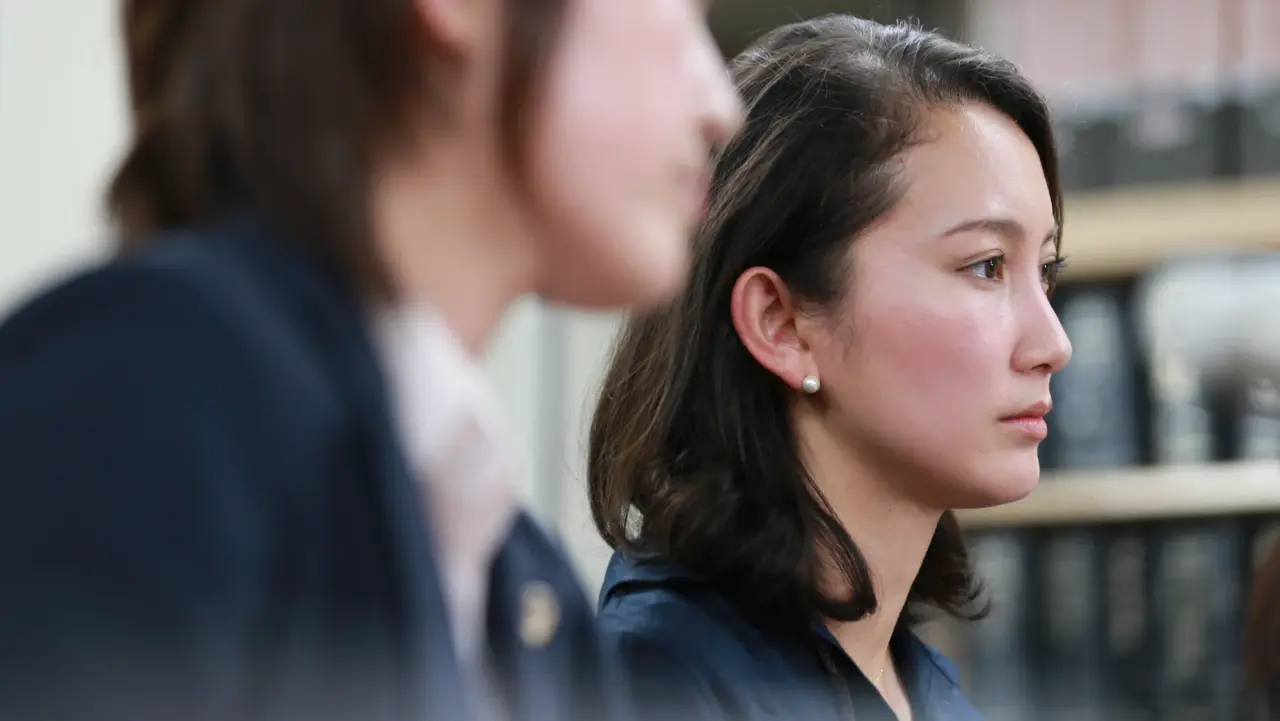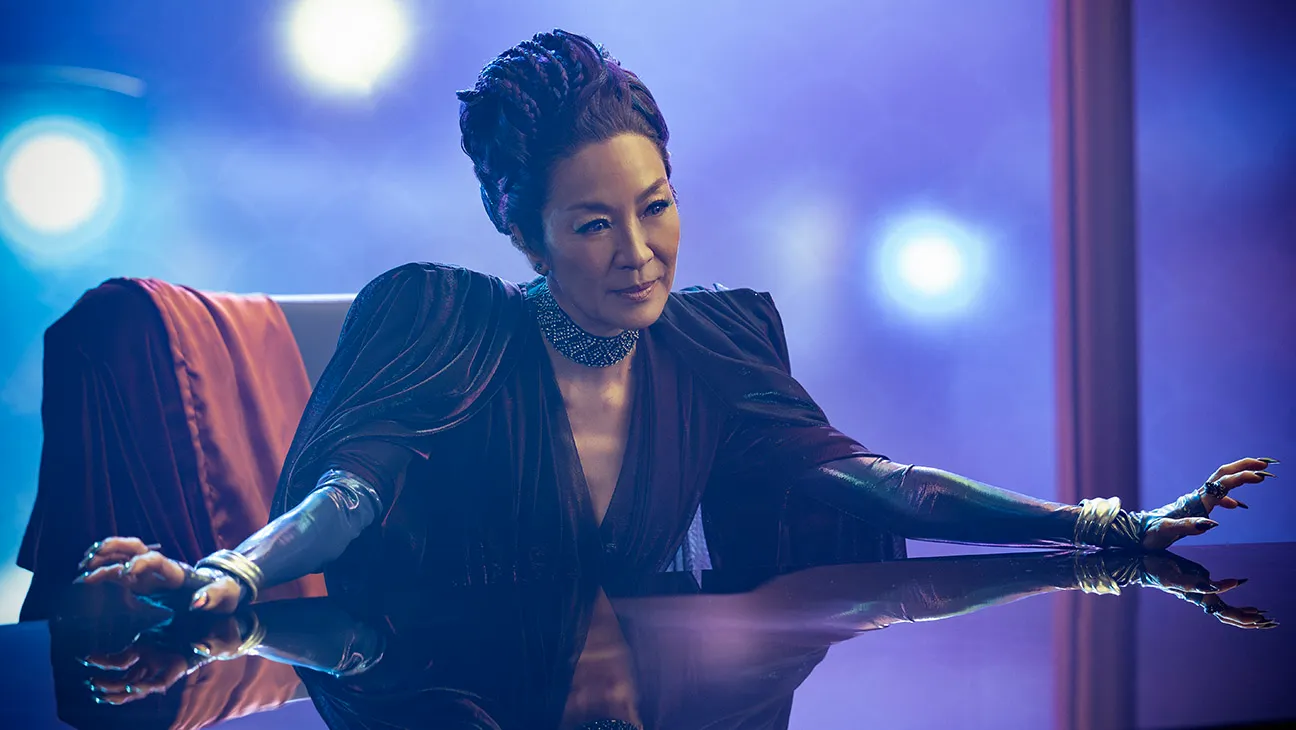Journalist Shiori Ito details her quest for legal action against the well-known reporter she accused of rape in her first documentary film, which debuted at Sundance.
The director of Shiori Ito's scathing documentary Black Box Diaries, who also serves as the subject of the film, informs a group of reporters about her attempts to file criminal charges against her rapist. She exemplifies what society has come to demand of strong women, much like many survivors of sexual abuse who are compelled to go through this public re-litigation routine. She wears the chaste uniform of the resentful, with her face devoid of expression, a conservatively fitted blouse (black button down here), delicate earrings (Ito chooses pearls), and little makeup (a single line of eyeliner and subtle blush).
Ito describes the police's first rejection of her victim's report and their litany of justifications in a composed voice: They said that sex crimes were hard to look into and that her rapist, Noriyuki Yamaguchi, a friend of the late Japanese prime minister Shinzo Abe and the former head of the Tokyo Broadcasting System's Washington Bureau, was too influential to be closely examined.
Ito, a journalist in her own right, chose to go public after the police dropped their investigation after a few months. Five months after holding the previously stated news conference in May 2017, she released her memoir.

Less than 10% of rape victims in Japan disclose their case, thus Ito's actions were unusual. They started a #MeToo movement that made the country face its views on sexual assault, its offenders, and its survivors.
Ito's efforts to get legal recourse are chronicled in Black Box Diaries, which debuted in the United States on October 25. The film is a visceral testament to survival and retribution, combining news accounts, hotel surveillance footage from the night of Ito's rape, diaristic iPhone films, and other audio recordings.
Ito's debut feature is accompanied by other pieces that recognize the force of victim testimony in its familiarity and horror.
She Said, Maria Schrader's traditional portrayal of New York Times reporters Jodi Kantor and Megan Twohey's investigation into Harvey Weinstein, is a clear example that immediately springs to mind. In a remarkable use of evidence, Schrader used the real-life tape of Ambra Battilana Gutierrez's meeting with Weinstein to change the film's viewpoint and startle audiences out of the cozy lull of made-up stories.
Another is Chanel Miller's 2019 memoir Know My Name, in which she reclaims her identity from the anonymizing pseudonym Emily Doe after being abused by Stanford University athlete Brock Turner in 2015. Miller's story, like Ito's, finds a reviving power in self-discovery.
The Ford/Hill Project, a depressing play at the Public Theater in New York, was directed by Lee Sunday Evans and starred Elizabeth Marvel. The recently concluded production interpolates the hearings of Christine Blasey Ford, who testified before the Senate Judiciary Committee in 2018 after accusing then-Supreme Court nominee Brett Kavanaugh of sexually assaulting her in high school, and Anita Hill, who testified before the same committee in 1991 to testify against then-Supreme Court nominee Clarence Thomas for sexually harassing her.
These works, which span various nations and years, are connected by the material power of the accused, which is granted by a culture more inclined to support the offenders than the survivors of attack. These women's tales collectively create a powerful chorus of damaging revelations that highlight the challenges survivors confront when attempting to speak the truth.
Read Also: Review of Viet and Nam An Enchanting Show of Gay Love

Ito was urged not to go public by the majority of those in her life. The depths of terror that foster a culture of silence in Japan are revealed through conversations with her family and one of the investigators in the criminal case that was abandoned; part of these conversations are featured in Black Box Diaries. These individuals fear losing their jobs, having their reputations damaged, and maybe facing violence as a result of Ito exposing herself to a harsh public.
Nevertheless, driven by the principles that inspired her to pursue her career, the journalist is forced to make an effort. Ito treats her case as rigorously as she would a news article. This approach gives Black Box Diaries the pulsating pace of, paradoxically, a procedural while also making the document simple to understand for those who are not familiar with modern Japanese culture.
In many sequences, Ito is shown taking copious notes, recording phone conversations, and sitting in rooms filled with evidence files and marked transcripts. In her role as director, she utilizes discussions with her editors, attorneys, and friends to provide background on the reasons for the abandonment of a criminal prosecution, the pursuit of a civil action, and the dynamics of Japanese culture that have complicated each step of her path.
Yamaguchi's influence is demonstrated via anecdotes from secret meetings with an unnamed investigator. In one especially incriminating scenario, the investigator informs Ito that police chief Itaru Nakamura, who considers Yamaguchi a friend, decided against the arrest order he had for the well-known journalist.
Particularly for viewers who are already familiar with survivor stories, the specifics of Ito's case retell tales that have gained popularity since the height of the #MeToo movement. Black Box Diaries exposes the sarcasm of a sexist society, the callousness of investigators, and the lustful police interrogation techniques that aim to erase survivors' memories by claiming the truth depends on insignificant facts.
The diaristic iPhone videos, which act as a means of confrontation for the subject director, are where Ito's film stands out. Ito the journalist melts and Ito the person becomes more apparent in these emotional and clear-eyed disclosures.
They expose the survivors' ongoing seclusion and make room for their inner demons, which surface when they aren't obliged to hide their suffering with well-chosen attire and steady tones. By transforming it from a public act to a pressing and restorative private one, they recover the concept of testimony.





.webp)

.jpg)



